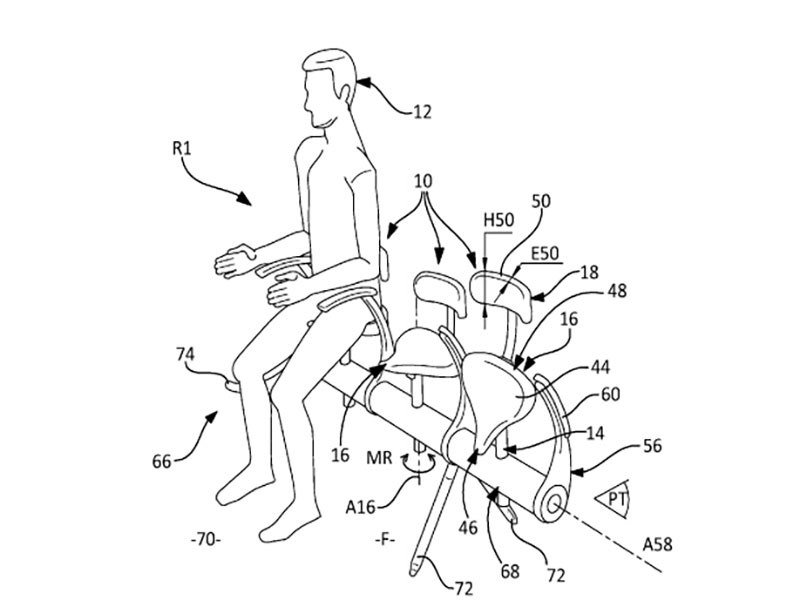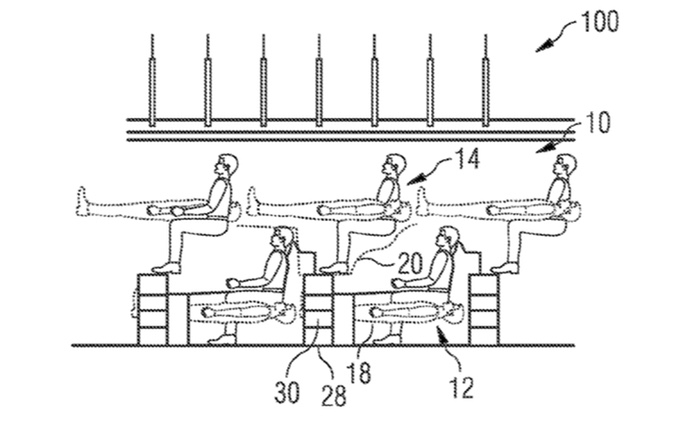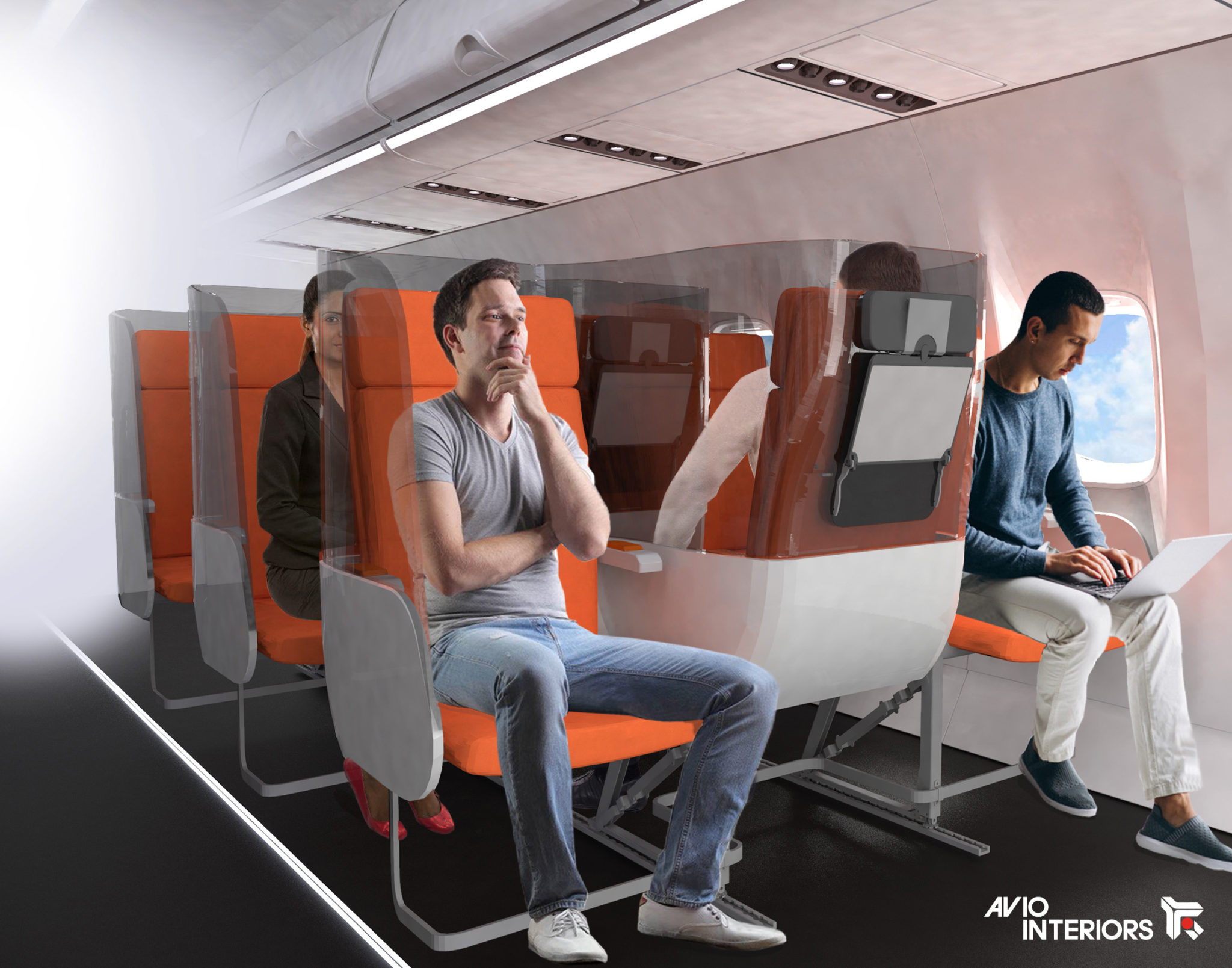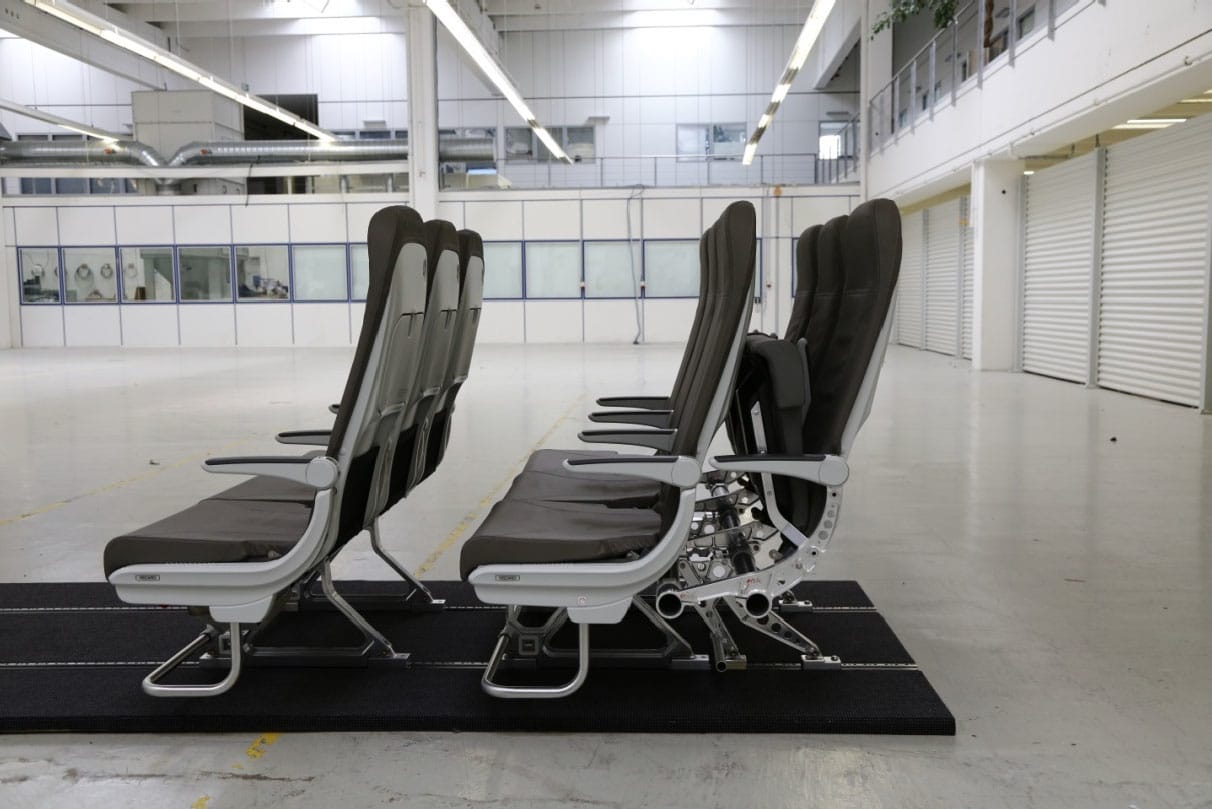Airplane
Seat

“The seat is easily the most important ingredient in the airplane interior. Make a man comfortable, and everything looks rosy to him. He can relax, his food tastes better, the trip will seem hours shorter.”
- Henry Dreyfuss
︎︎︎ Related entries:
Armrest,
Cabin Divider,
Comfort,
Jetiquette,
︎ Random entry
Tags: airplane interior, materials,
spatial configuration,proxemics
Armrest,
Cabin Divider,
Comfort,
Jetiquette,
︎ Random entry
Tags: airplane interior, materials,
spatial configuration,proxemics
Design Decisions
The airplane seat is crucial to passenger comfort, as a zone of area which passengers’ movements are usually limited to during a flight.
The choice of materials of an airplane seat is dictated primarily by requirements of weight, durability, and safety in the case of a crash. To reduce fuel use, airlines seek to minimize the weight of any object on board as much as possible, and the choice of seat textiles are determined primarily by their durability, to withstand the heavy usage throughout their life cycle of 6-10 years before an interior overhaul. In terms of safety, all parts of the seat must comply with aircraft fire regulations[1], and no part should come apart in a manner that would pose a safety hazard to the passenger, should there be a crash.
The economic feasibility of air travel is dependent upon spatial efficiency. These pressures to maximize space has led to “cabin densification” across airlines, felt most strongly in the economy class. Seats have become slimmer and legroom has diminished. While 34 to 35 inches of distance between seats was once common for economy class, most aircrafts currently allot 30 to 31 inches of distance, with a few major carriers providing only 28 inches [2].
 Patent for bicycle
type seats for short-haul flights
Patent for bicycle
type seats for short-haul flightsAircraft manufacturers have endeavored to be prepared for numerous spatial strategies for maximizing efficiency, filing patents that anticipate a wide range of possible design directions.
 Patent for
stacking seats in order to allow each seat to recline completely flat.
Patent for
stacking seats in order to allow each seat to recline completely flat.This trend is counterbalanced, however, by regulations that mandate a certain ratio of flight attendants to seats; an increase in the flight crew also increases overhead and labor costs for the airlines [2]. Additionally, the COVID-19 pandemic has introduced new physical distancing requirements, and have made passengers reluctant to even consider traveling by air. As personal space becomes more important due to COVID-19, the trend toward cabin densification may have halted.
 Patent for
maximizing space by hexagonal arrangement of seats
Patent for
maximizing space by hexagonal arrangement of seats Effects on Passengers

Diagram of sitting pitch (A), and legroom (B)
Passengers and human factors researchers primarily focus on legroom as one of the most important factors influencing comfort in the economy class [4,5]. A variety of studies have also sought to identify the optimal seating pitch, which is the distance between the same two points on a seat from the seat in front [4]. One study identified the optimal seating pitch as 34 inches to 40 inches, depending on the passengers’ bodily proportions. Notably, it also observed that an increase in the distance beyond that did not necessarily correlate with increasing comfort. In fact, “there is a turning point where larger seat pitches lead to less well-being”[4], perhaps as a result of passengers feeling overexposed.
The amount of legroom is a useful shortcut for assessing comfort levels, but other factors also contribute significantly to the feeling of comfort in one’s seat. The overall well-being of a passenger is influenced by both physiological and psychological factors [4, 5]. Passenger surveys have specifically highlighted proximity to neighbors, perception of hygiene, and crew attention as key psychological factors [6]. In particular, invasion of personal space is a critical source of discomfort for aircraft passengers. While many of these invasions often take the form of physical encroachments, other sensory factors play major roles, including smells, noise, or eye contact [7].
What-Ifs
What if airplane seats were integrated with Internet of Things (IoT) systems?
Various companies have been developing sensor systems that keep track of seatbelt usage and reclined seats so that the crew would not have to do time-consuming and intrusive monitoring during take-off and landing. These technologically integrated seats could also monitor other conditions such as hydration or anxiety levels, but will also have to be respectful of privacy concerns.
What if instead of organizing the cabin by class, it was organized by usage types?
These usage types might be family lounging, computer work, gaming, and sleeping. When purchasing tickets today, families often try to reserve a row of seats for themselves; this would be a natural extension of that inclination. Machine learning could be used to help optimize the seating configuration, so that more convivial activities like family lounging and gaming would be adjacent, and quieter activities such as work and sleeping could be paired elsewhere.
Airbus’s Cabin Vision 2030 video shows such a proposal, showcasing dedicated spaces for five general passenger personas: a young family, an elderly couple, a gamer, a business worker, and a sleeper [8].
Airspace Cabin Vision 2030 proposal
What if airplane seats were staggered, to allow for greater personal space, and to assist with Covid-19 social distancing?
With the advent of Covid-19, a temporary solution to social distancing protocols has been to leave the middle seat empty. The middle seat is already popularly deemed the most uncomfortable and awkward seat on the plane. Several proposals have been made that give greater personal space to the middle seat, and some can easily be adapted to also address Covid-19. The seats could be staggered sequentially to allow for each window, middle, and aisle seat passenger to have their own armrest and sense of dedicated space[9].

Staggered seat design by Thompson Aero Seating
Another solution is a staggered S-shape pattern with the middle seat facing opposite from the window and aisle seats. A curtain could wrap around the seats in an S-shape to provide extra contact protection to each passenger [10].
 Janus seat design by Avio Interiors
Janus seat design by Avio Interiors What if airplane seats were not fixed in place? What if they could be reconfigured based on the number of passengers?
Airplane seat layout changes normally take a day to implement, but a different design approach could allow for faster and easier seat reconfiguration according to real-time passenger count for that flight. One such idea is proposed by Airbus’s “Smart Cabin Reconfiguration” system, which features foldable seats installed along a floor rail. This system would allow the cabin crew to quickly adapt the number of seats to the number of passengers scheduled to board. If a flight is not full, the empty seats could be folded up to become more compact, and slid along the floor rail toward the back. Then the remaining seats could be spaced further apart, allowing more legroom and comfort for the passengers onboard [1].
 Airbus’s Smart Cabin Reconfiguration proposes foldable seats installed along a floor rail
Airbus’s Smart Cabin Reconfiguration proposes foldable seats installed along a floor rail - Lyon, R. E. 2008. “20 - Materials with Reduced Flammability in Aerospace and Aviation.” In Advances in Fire Retardant Materials, edited by A. R. Horrocks and D. Price, 573–98. Woodhead Publishing Series in Textiles. Woodhead Publishing.
- Bachman, Justin. 2017. “The Incredible Shrinking Airline Seat.” Bloomberg.Com, August 17, 2017.
- Heller, Karen. “Inside America’s Dysfunctional Love Affair with the Travel Pillow.” Washington Post, Sept 9, 2019, sec. Style.
- Kremser, Florian, Fabian Guenzkofer, Claudia Sedlmeier, Olaf Sabbah, and Klaus Bengler. 2012. “Aircraft Seating Comfort: The Influence of Seat Pitch on Passengers’ Well-Being.” Work (Reading, Mass.) 41 Suppl 1: 4936–42.
- Vink, P., C. Bazley, I. Kamp, and M. Blok. 2012. “Possibilities to Improve the Aircraft Interior Comfort Experience.” Applied Ergonomics 43 (2): 354–59.
- Vink, Peter. 19. Aircraft Interior Comfort and Design. 1st ed. Ergonomics Design & Mgmt. Theory & Applications. CRC Press.
- Lewis, Laura, Harshada Patel, Mirabelle D’Cruz, and Sue Cobb. 2017. “What Makes a Space Invader? Passenger Perceptions of Personal Space Invasion in Aircraft Travel.” Ergonomics 60 (11): 1461–70.
- Airbus. 2019. Airspace Cabin Vision 2030. https://www.youtube.com/watch?v=loWML-pIsaU.
- Garcia, M. (2015, April 16). “The Economy Seat Concept That Will Have Passengers Booking the Middle Seat”.
- Walton, John. "Aviointeriors Proposes Post-COVID-19 Janus Seats." Runway Girl. June 07, 2020.
- Kim, Soo. "Revealed: The Aircraft Interiors of the Future." The Telegraph. April 06, 2016.